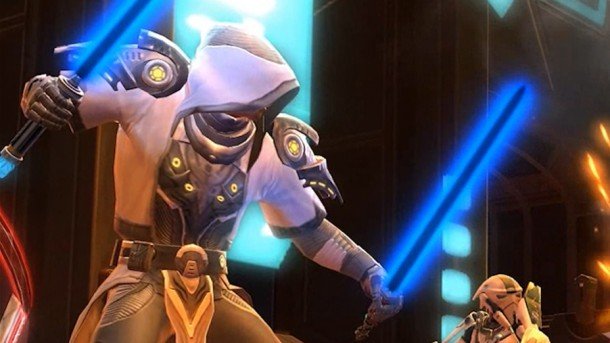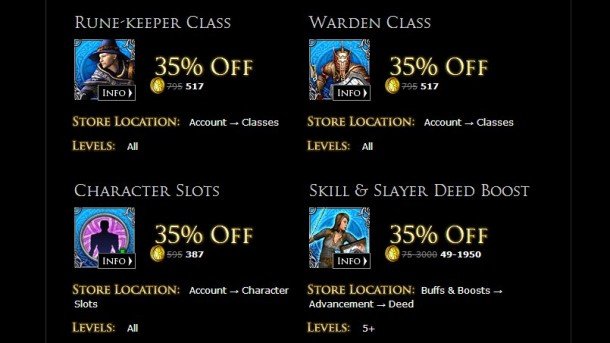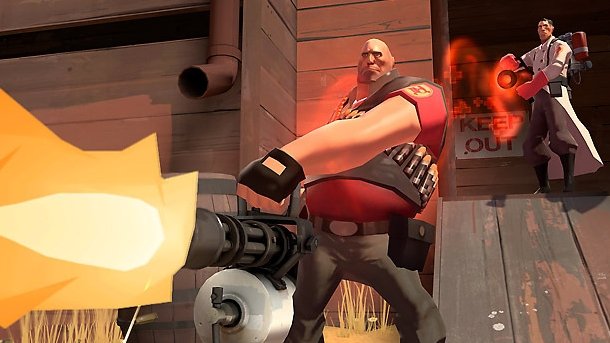
"Free-to-play" and "microtransactions" are dirty terms to some. That's understandable. Famous Facebook Skinner boxes like Farmville have clouded attitudes toward today's free-to-play games, and there's an assumption all microtransaction-driven game design is handicapped by the need to create ways to charge players. For some games, this is certainly true, but there are excellent free-to-play games out there that represent good value for money. Below we've assessed some of the most common methods used by free-to-play games to make money from players, and highlighted some of the fairest examples of free-to-play that are worth your time.
Convoluted shops and fake currencies

A lot of the distrust toward microtransaction-driven games comes down to the way they habitually obfuscate both what exactly you'll be paying for, and how much you'll be paying for it. This starts with the standard practice of exchanging of standard currency for fake fun-bucks equivalents. In Rift, it's "Credits", in The Old Republic, it's "Cartel Coins", in War Thunder, it's "Golden Eagles", to name just a few. The deliberately awkward exchange rates are of course designed to hide the actual value of the items you're buying, but hiding the value of every transaction at this fundamental level appears dishonest.
There's a widespread lack of clarity around the payment systems attached to free-to-play games. The price and payment method of engaging with a game should be quickly apparent, and expressed in a way that lets players know exactly what they're getting for their money. It should not, like Star Wars: The Old Republic, require the careful study of three different screens to unravel the various interlocking currencies, subscription deals, expansion packs and "preferred status" upgrades available.
If you're inviting players to make a purchase that you believe is worthwhile, why hide the price? Quake Live has two tiers of membership, which grants players various levels of access to premium arenas, and the ability to host matches, but look here , at the top of the page, a clear list of features and a price tag.
In short: We see this practice everywhere, even in otherwise decent free-to-play implementations like Card Hunter. The cost of playing a game should be clear, and that starts with straightforward price labelling.
Crates/card packs and random chance drops

If you hand someone a closed box full of promised goodies, many will happily pay you for the crowbar to crack it open. The tremendous power of small random packs of goodies has long been known the creators of physical collectible card games and companies that made football stickers a decade ago. For some, including our former reviews editor Rich McCormick, the allure of a closed box full of goodies is too powerful to resist. Whatever the worth of the randomised prizes inside, the offer of a free chest and the option to buy a key will make a small fortune out of these personalities. For those that like to gamble, these crates often offer a small chance of an ultra-rare item.
In Team Fortress 2 and Dota 2, a chest will drop into your inventory every so often. Keys can be bought with real money, or traded for, and are very popular - five of the seven TF2 store bestsellers are keys right now. As with card packs, the process of discovery and anticipation that goes into opening a box is as exciting as the item inside. Everyone has to decide for themselves whether that's a valuable reward, and whether £1.50 / $2.50 is a worthwhile price for that rush. The important thing is that players know exactly what they're gambling for when opening a box, and have at least a sense of the odds involved. The Team Fortress 2 wiki exposes estimated percentage odds for each crate, but as any Vegas slot machine designer will tell you, revealing all of the maths maths can ruin the glamour of the gamble, and make no mistake, this is gambling.
Keep up to date with the most important stories and the best deals, as picked by the PC Gamer team.
Boxes are easily deleted and ignored, but receiving one isn't a good experience. At worst, it's a taunt that pops up in the same space ordinarily to message gifts. Receiving a crate for the first time, and then learning that it requires a purchase to unlock, is a betrayal of the expectations that the rest of the drop system instils. The positive side, in the case of TF2 and Dota 2, is that revenue from crate sales goes back to community item creators, and the items you can earn don't unbalance the core game. Team Fortress 2's random drops also shower you constantly with gifts, which balances everything out somewhat.
In CCGs like Hearthstone, Fifa's Ultimate Team and Mass Effect 3's multiplayer mode, you can unlock random cards/players/guns from packs earned through in-game money as well as real currency. This accepts payment in the form of a chunk of your spare time, which is a good deal if the game is good. It operates more like a randomised unlock system that you can speed up with money if you wish.
In short: card packs and crate drops are a form of gambling. If you're okay with that, then there's no reason not to enjoy games like Hearthstone. It's worth checking to see if packs can be earned with a sensible amount of in-game progress before investing lots of time.
In-game item stores

There are two main questions to keep in mind when a game is asking you to spend real money for specific items.
1. Can they only be earned by paying up?
2. Are they better than what you have already?
The answer to both, if a game is being as fair as possible, is no. Games like Team Fortress 2 have a selection of alternative weapons and gadgets you can unlock for your class. That's alternatives , not straight upgrades. Many combine certain situational benefits at the expense of a well rounded, overall build. The Sniper being given a rifle that shoots piss is not at an obvious advantage, especially when against one that shoots bullets. And, in League of Legends, it's hard to know if the angry polar bear is inherently better than a girl with the shark cannon, but both have their uses when played effectively, and the rotating roster gives you options regardless.
Not that pure upgrades are inherently wrong. In games like World of Tanks, where a natural tier system denotes each country's best metallic beasts, it comes down to matchmaking to keep things fair. Put the paid-up kings against the outgunned newbs and you start edging towards a pay-to-win scenario. Keep everyone grouped around their unlock level, and the only advantage for those that pay is a quicker trip to the top tiers.
Even good in-game item stores can go bad over time. The community's faith in a game's integrity can be destroyed by a single update, and in competitive games weapons sometimes have to be rebalanced. That means the items you're buying might not retain its characteristics.
In short: Item stores that sell objects that affect your in-game performance are risky. If a game sells guns/cars that can't be earned any other way then treat that as a big alarm bell. Even if those items can be earned through progress, it helps to favour games with good matchmaking services and large playerbases, which can smooth out balance issues.
PC Gamer is the global authority on PC games—starting in 1993 with the magazine, and then in 2010 with this website you're currently reading. We have writers across the US, Canada, UK and Australia, who you can read about here.


